Mineralogical Almanac visit to the Museum of Royal Institute of Natural Science, Brussels, Belgium.
Text and photos: Michael Leybov, Mineralogical Almanac
This year we were lucky to visit the Museum of Royal Institute of Natural Science (Brussels, Belgium). Museum curator Marleen De Ceukelaire. kindly gave us the opportunity to see and take photos of some mineral specimens from the collection of Anna Pavlovna, Queen of the Netherlands and Grand Duchess of Luxembourg in 1840-1849). Anna Pavlovna was Russian Princess, daughter of Paul I, granddaughter of Catherine the Great. This collection of minerals and rocks was acquired during the visit of Anna Pavlovna and her husband, Prince Willem II of the Netherlands, to Russia. Later collection was transferred to the museum.
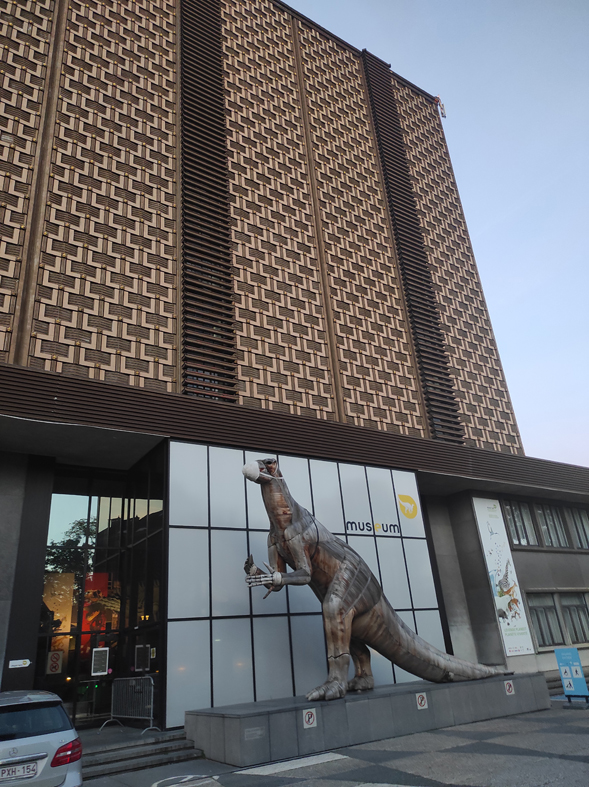
.jpg)
1a. A dinosaur met us at the main entrance to the museum. He was also wearing a mask.
1b. Marleen De Ceukelaire, Museum curator with Ludmila Cheshko and Michael Leybov, Mineralogical Almanac at the Museum of Royal Institute of Natural Science (Brussels, Belgium) .
Nowadays so called “The Russian collection” (about 800 minerals and rocks) makes up the oldest entry in the catalogue. The collection was deposited, in 1828, at the Brussels Museum, fore-runner of our Museum, by Prince William of The Netherlands. This collection lay undisturbed in the stores for more than 50 years before finally being examined by a scientific eye.
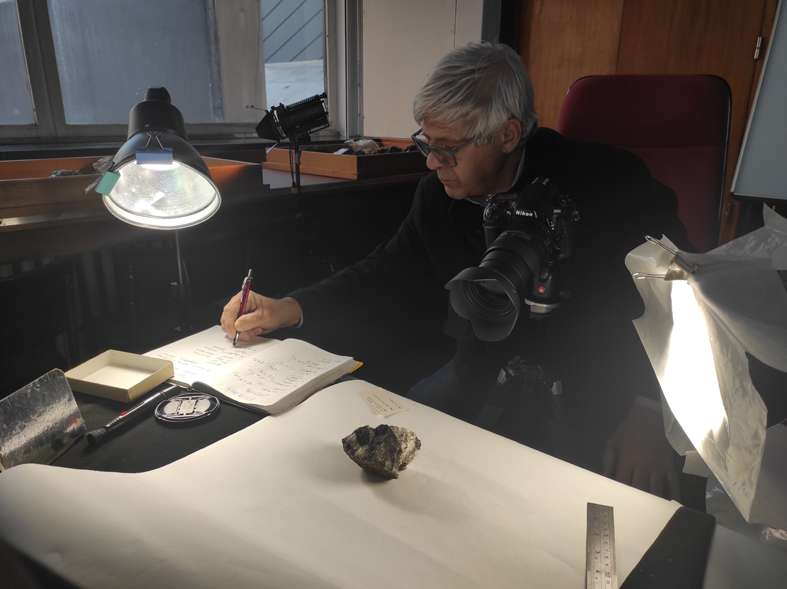
2. Michael Leybov is taking photos of minerals from Anna Pavlovna’s collection for forthcoming publication in Mineralogical Almanac.
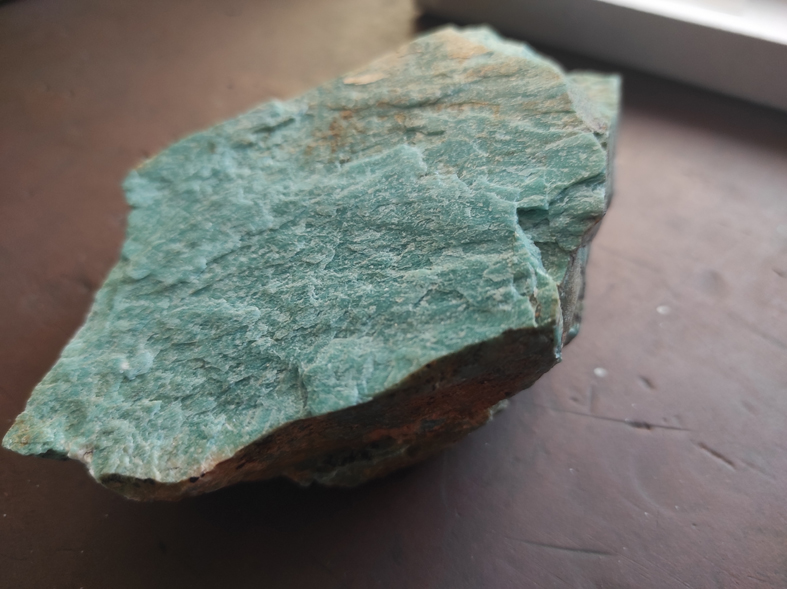
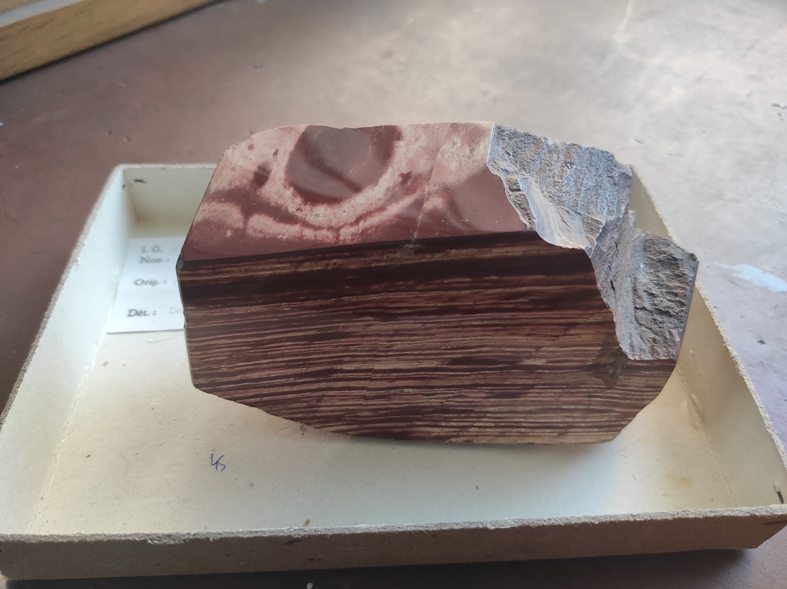
3a, b. Specimens from the collection of Anna Pavlovna: amazonite from Miass (Southern Urals) and Ural jasper.
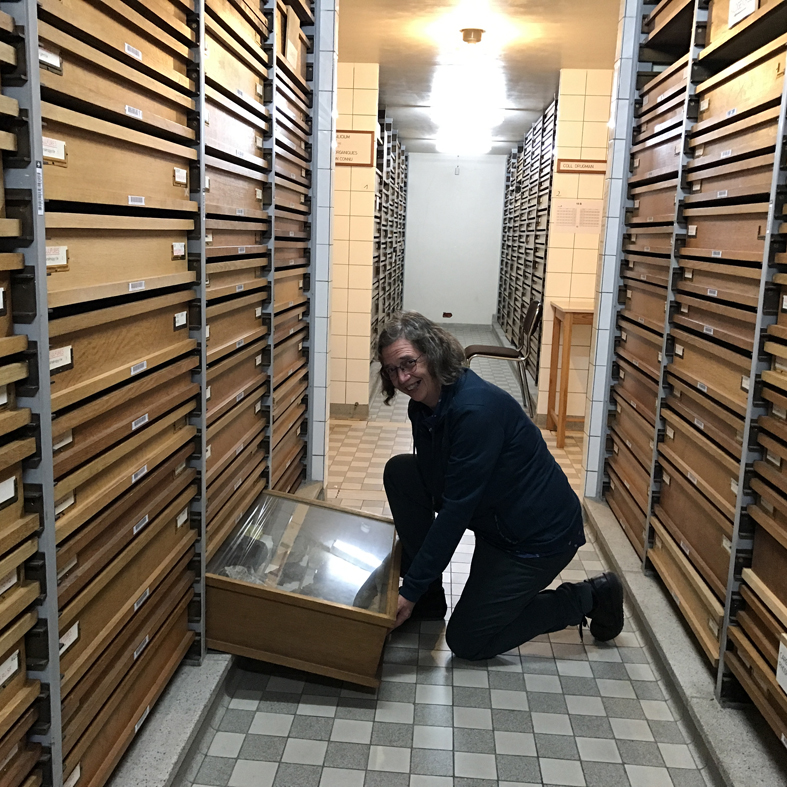
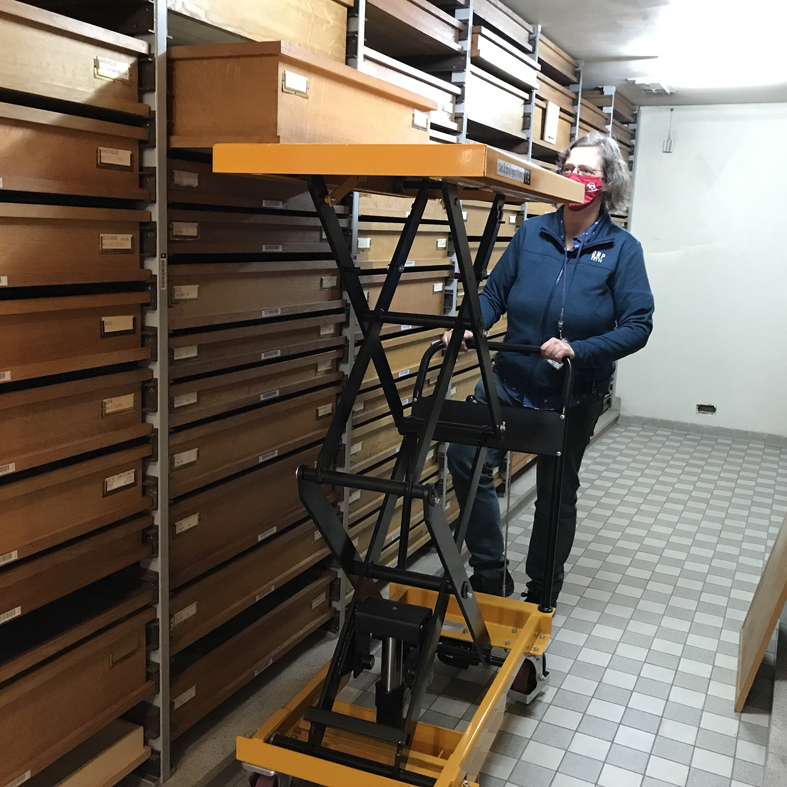
4a, b. Museum curator Marleen De Ceukelaire kindly gave us the opportunity to see and photograph some specimens from the collection of Anna Pavlovna.
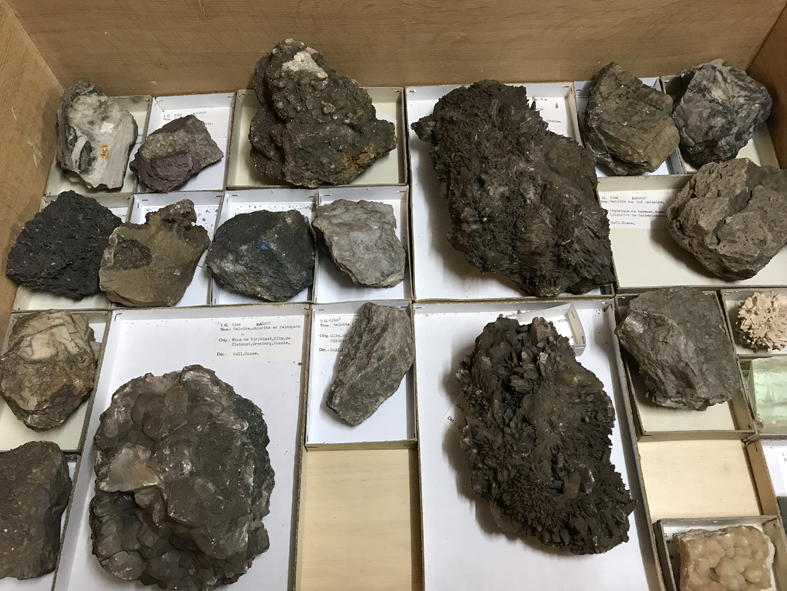
5. Specimens from the collection of Anna Pavlovna, stored in the funds of the museum.
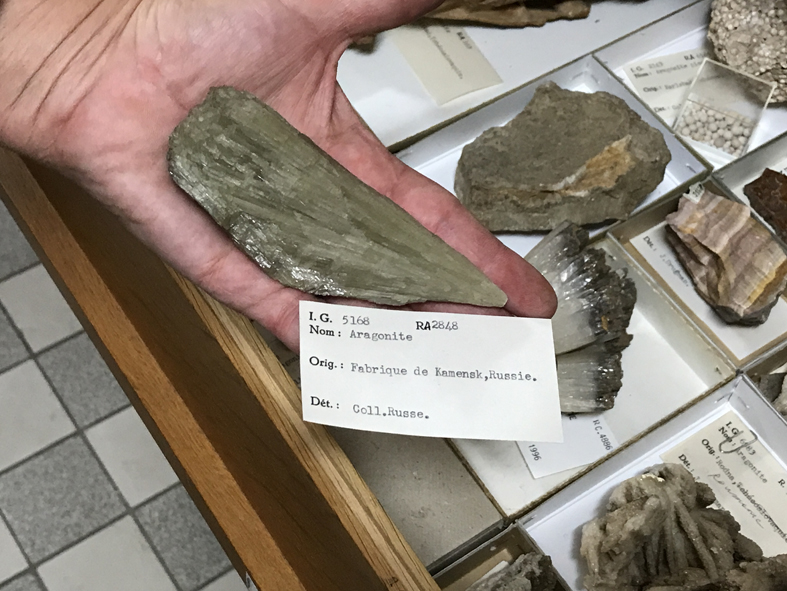
6. Aragonite. Fabrique de Kamensk, Russie, the specimen from the historical collection of Anna Pavlovna.
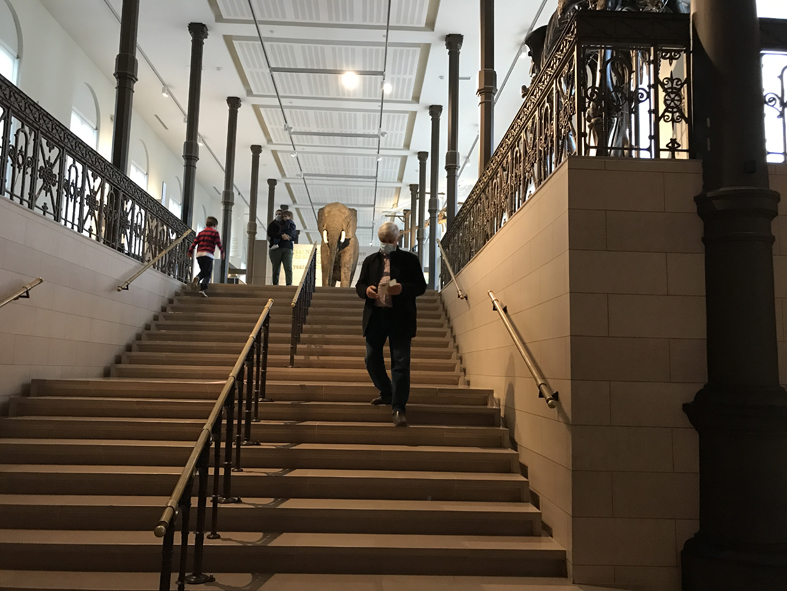
7. When we finished to take photos in the funds, we briefly got acquainted with some of the museum's expositions. The interior of the museum is typical of the Belgian architecture of the late 19th century - early 20th century
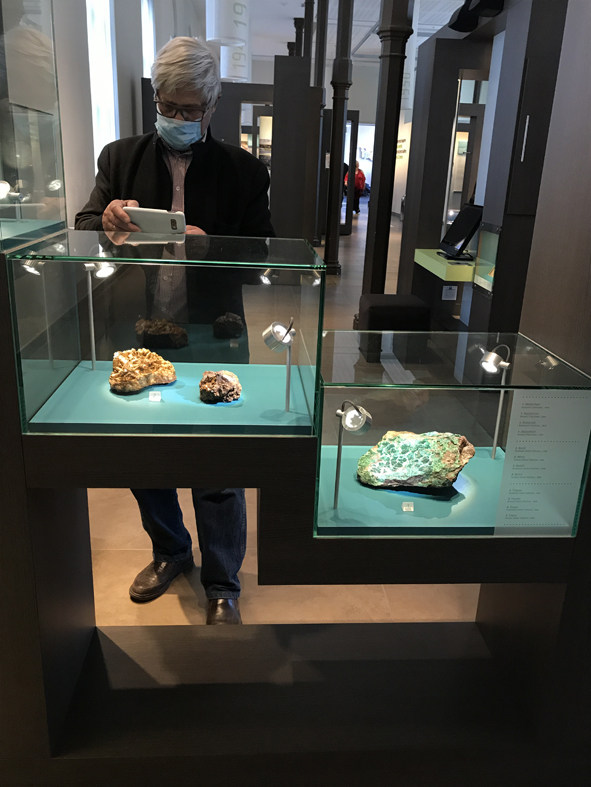
8. In the historical hall 3 classical specimens from the historical collection of Anna Pavlovna are exhibited in the showcase: malachite from the Tur'insk mines, the Northern Urals, topaz and aquamarine from the Sherlovaya Gora deposit, Transbaikalia.
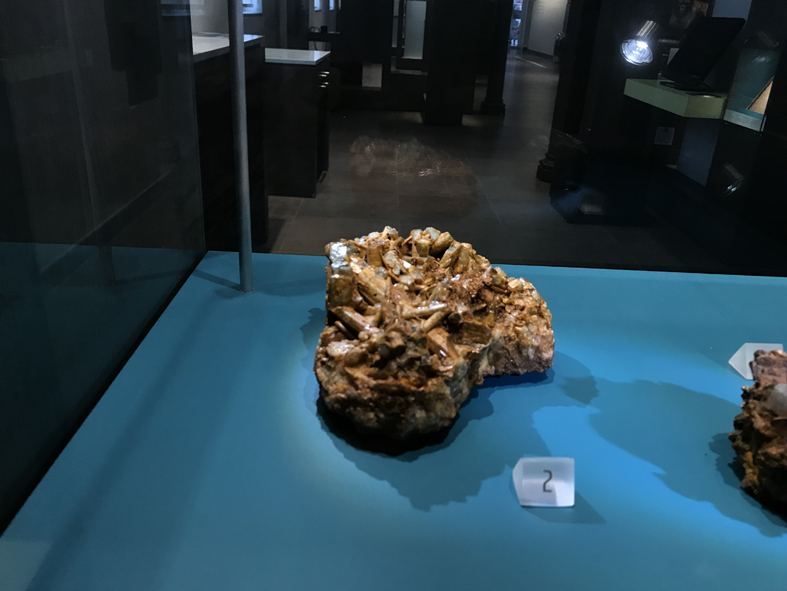
9. Beryl. Sherlova Gora (Sherlovaya Gora), Adun-Cholon Range, Zabaykalsky Krai, Russia, the specimen from the historical collection of Anna Pavlovna, 1828.
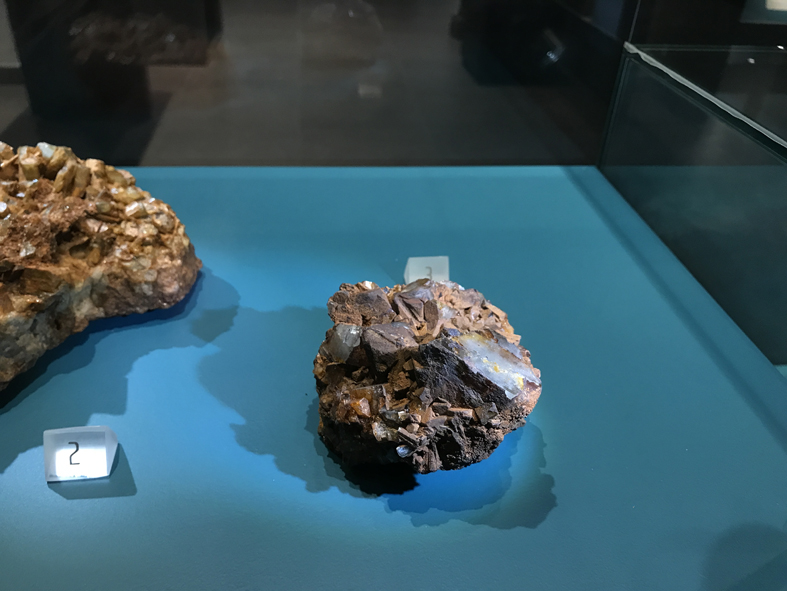
10. Topaz. Sherlova Gora (Sherlovaya Gora), Adun-Cholon Range, Zabaykalsky Krai, Russia, the specimen from the historical collection of Anna Pavlovna, 1828.
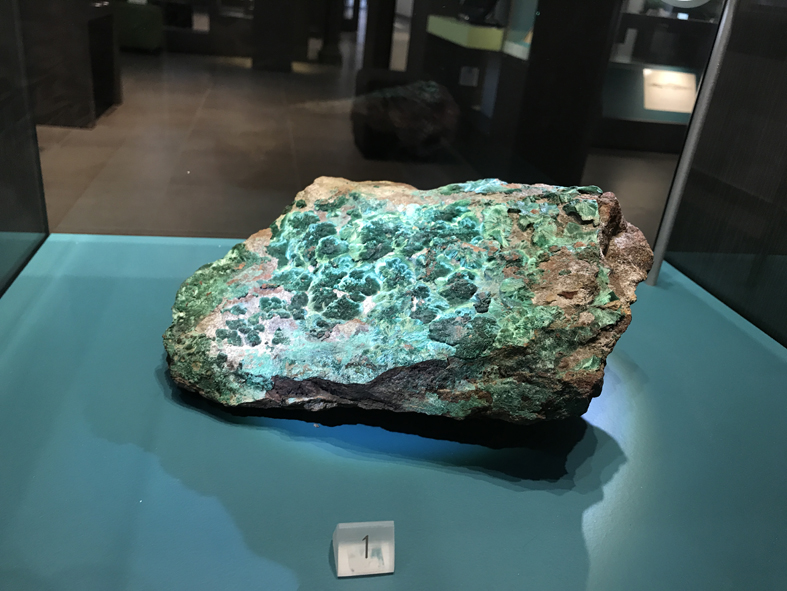
11. Malachite. Tur'inskiy mine, Sverdlovsk Oblast, North Urals, Russia, the specimen from the historical collection of Anna Pavlovna, 1828.
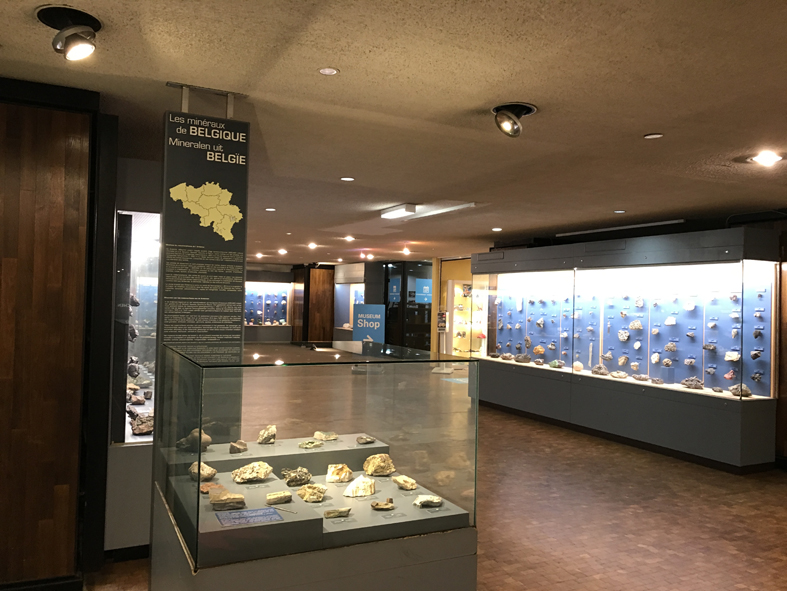
12. General view of the hall of minerals, in the center of which there is an exposition of minerals from Belgium. In this hall the exhibits are displayed according to systematics, as well as the posters on the walls devoted to properties of minerals.
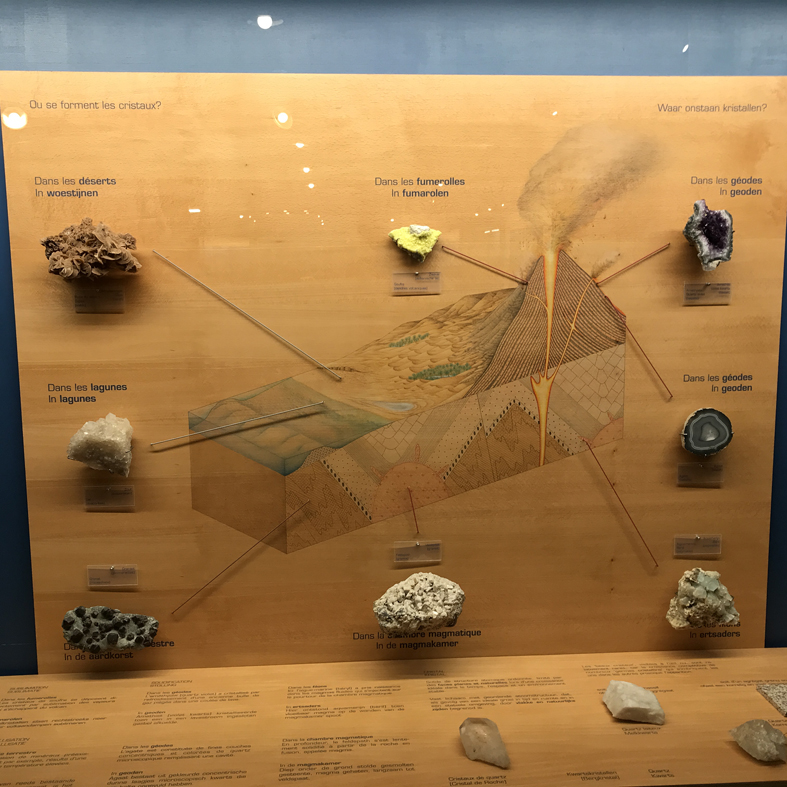
13. Poster "Where do minerals form?"
Several interesting Russian specimens from the systematic collection.
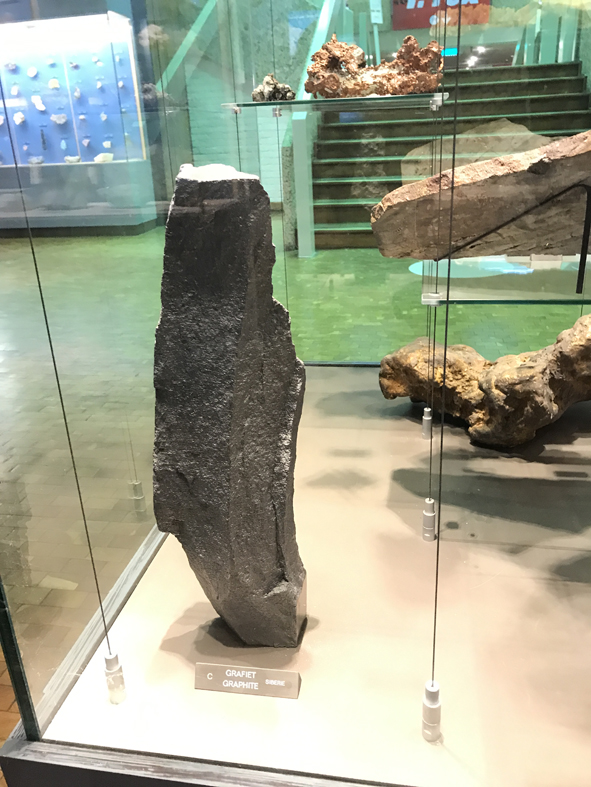
14. Graphite, Botogolskoye deposit, Transbaikalia, Russia.
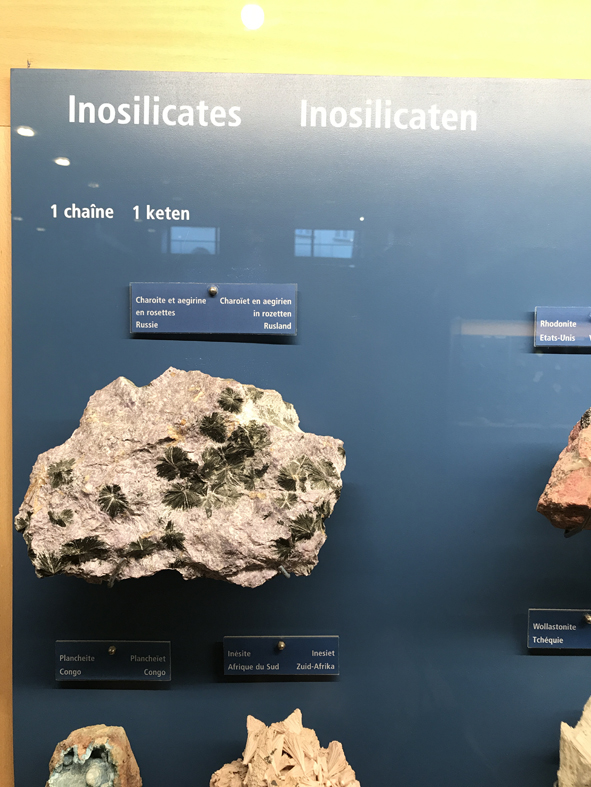
15. Charoite on aegirine, Russia
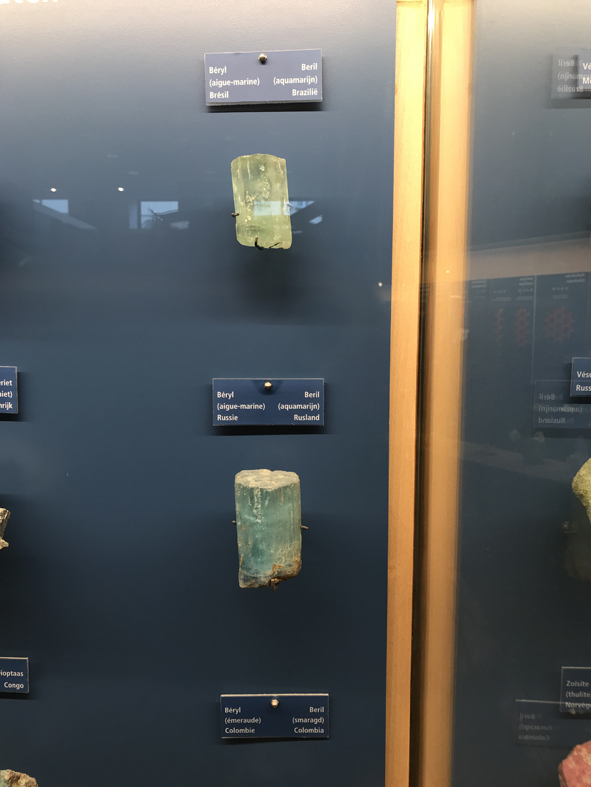
16. Beryl (aquamarine), Russia.
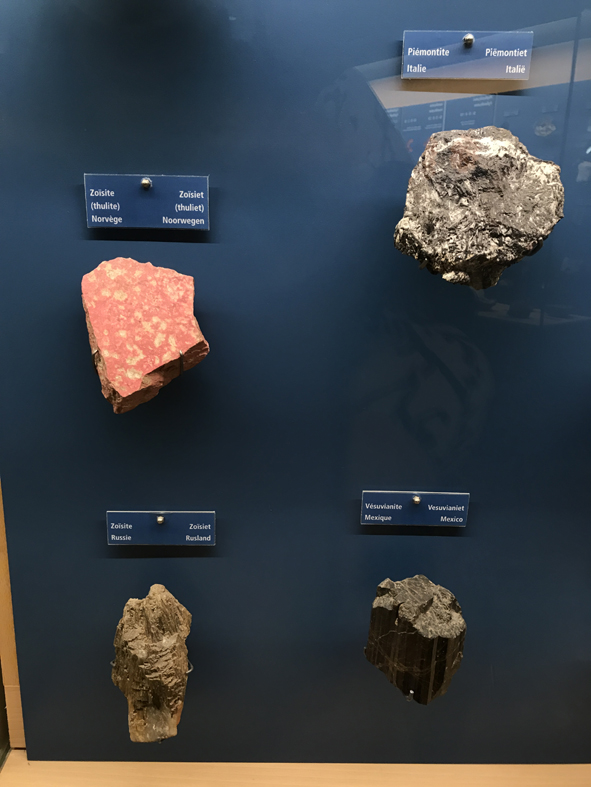
17. Zoisite, Russia.
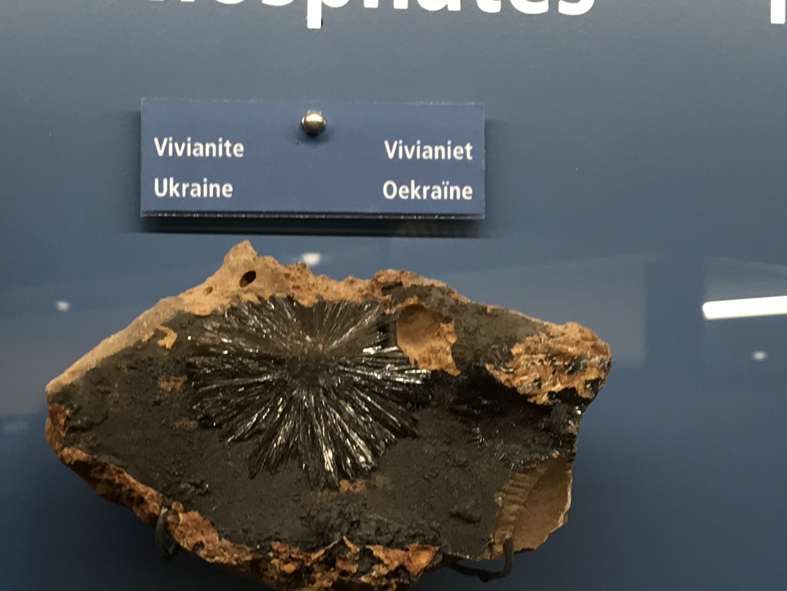
18. Vivianite, Kerch, Crimea.
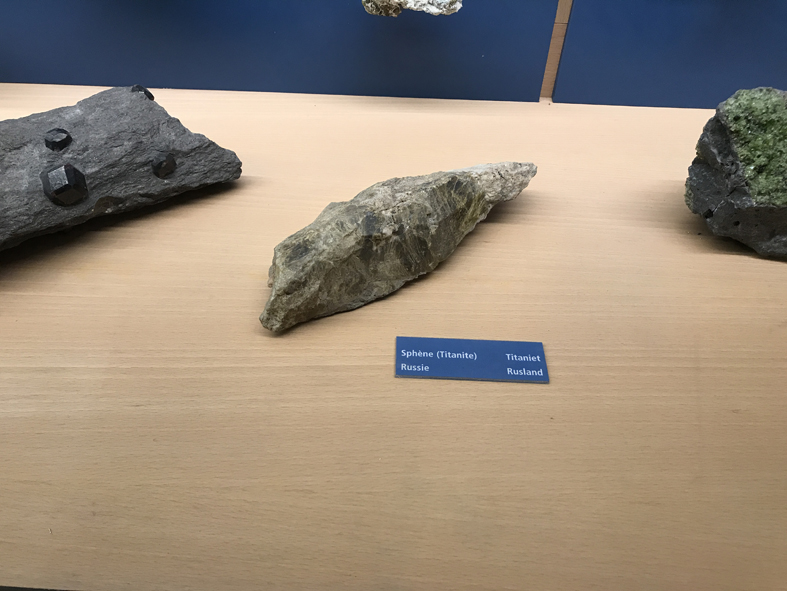
19. Titanite, Russia.
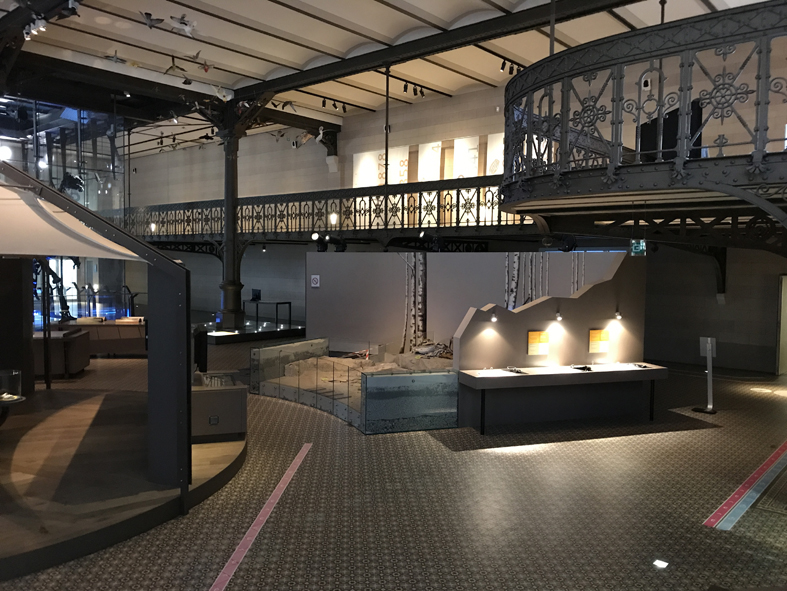
20a.b. General view of the hall "Zoo for Dinosaurs”, which houses the famous collection of dinosaurs. The interior of the hall with balconies is interesting with a traditional metal lattice, characteristic of the architecture of Belgium of the late 19th century - early 20th century.
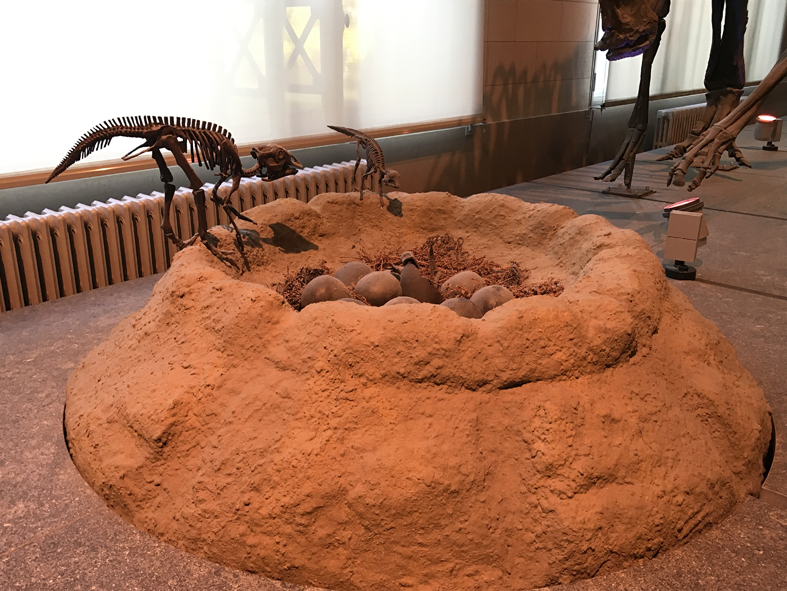
21. Reconstruction of the dinosaur nest.
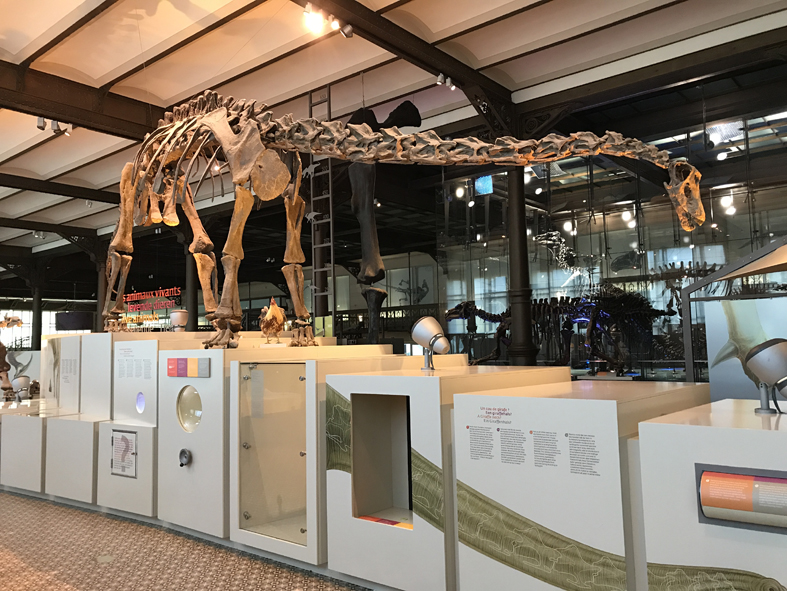
22. In the hall "Zoo for Dinosaurs"
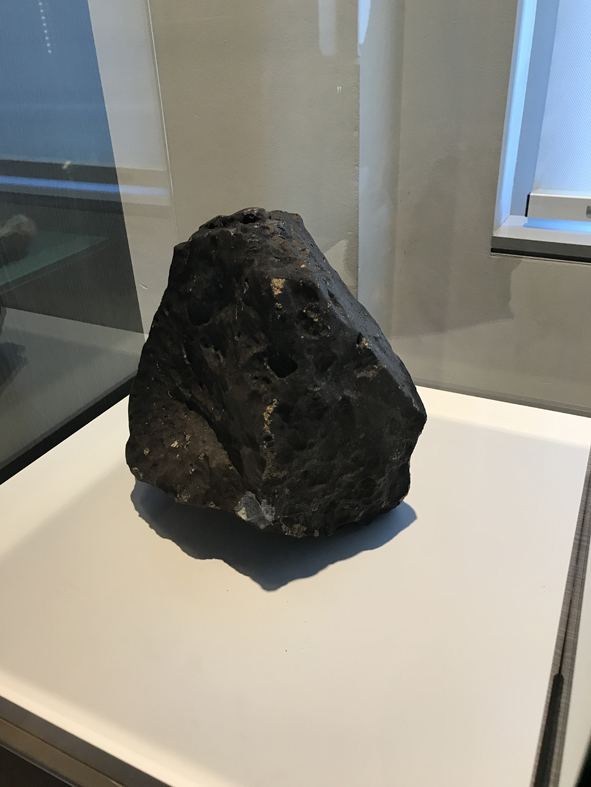
23. A meteorite from Antarctica is displayed in one of the showcases of the historical hall. It was found in 2013 by Belgian and Japanese scientists and was the largest specimen from Antarctica for 2013.

